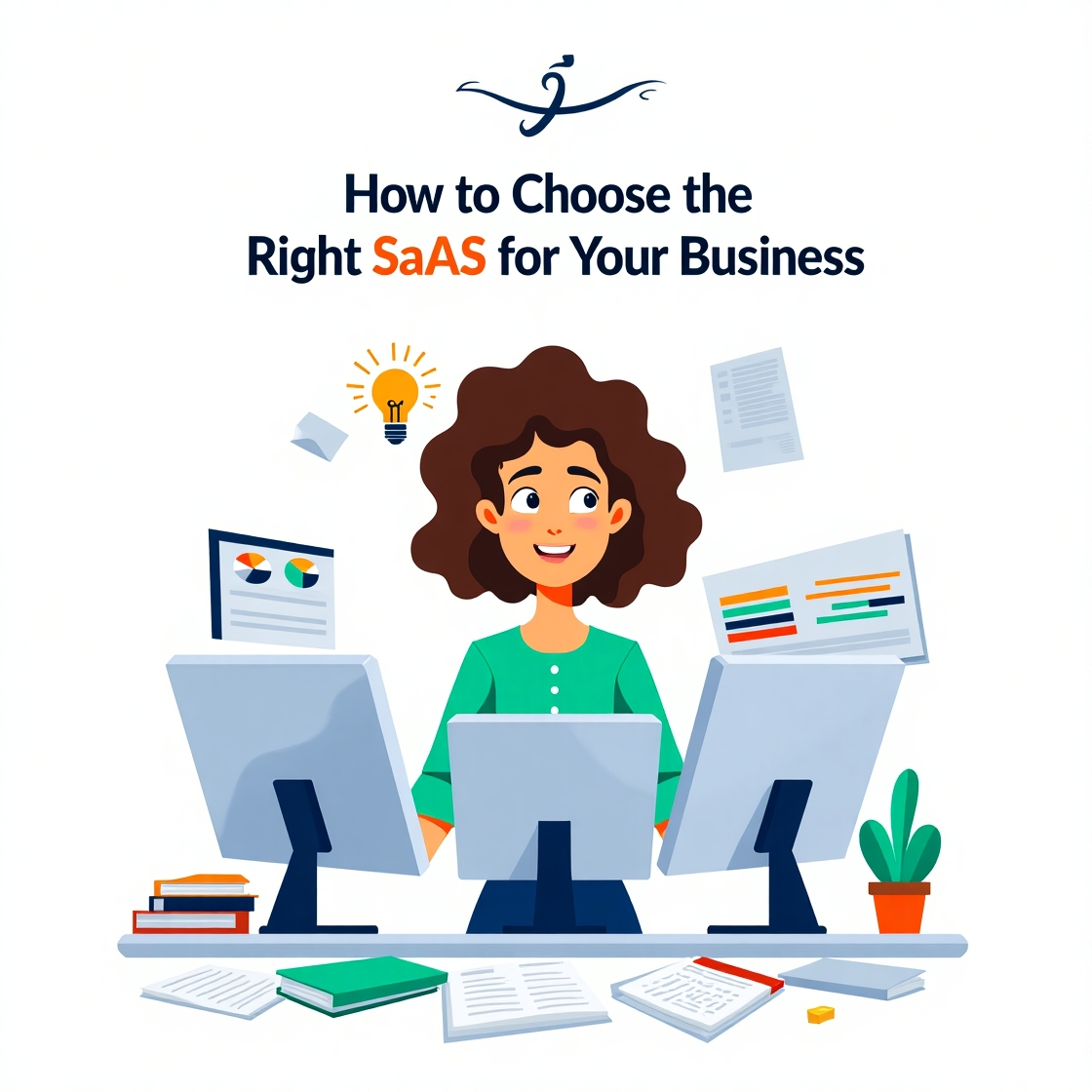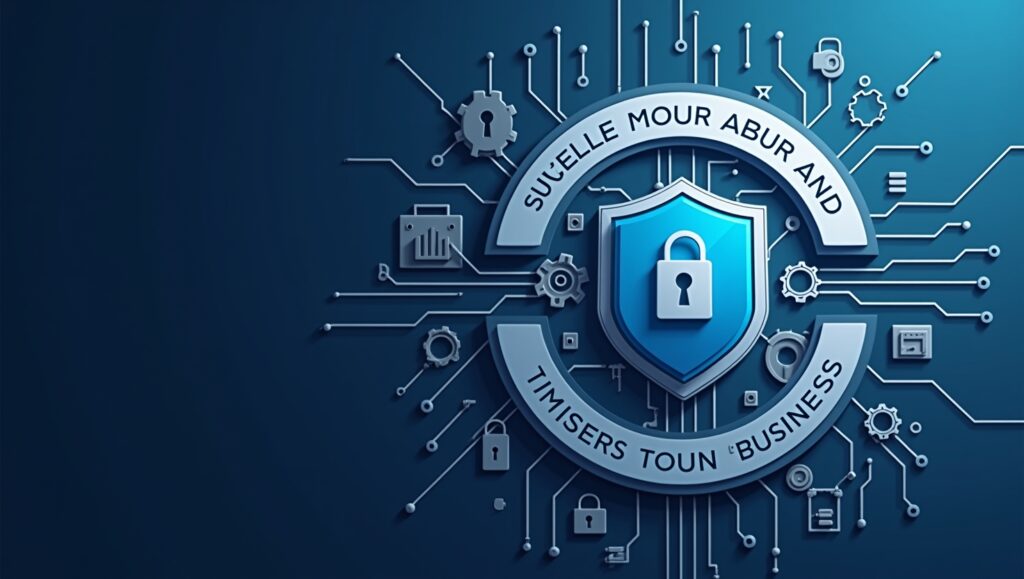How to Choose the Right SaaS To Your Business


The numbers are alarming – involve cloud assets. This reality hits hard when we search for SaaS solutions to power our businesses.73% of worldwide data breaches
The martech landscape has exploded with 9,932 solutions available in 2022. Finding a reliable SaaS provider feels like finding a needle in a haystack. The situation becomes more concerning when you consider that 60% of Salesforce users don’t back up their cloud data. This highlights how significant it is to select SaaS solutions that put security and data management first.
Your business success depends on making the right choice, whether you need a simple search solution or want a complete SaaS search engine. We created this piece to help you find the perfect SaaS solution that matches your specific needs.
Let’s take a closer look at making this decision confidently.
Understanding Your Business SaaS Needs
A clear understanding of business requirements marks the beginning of choosing the right SaaS solution. Companies with less than 50 employees use an average of 16 SaaS applications, while organizations with over 1,000 employees employ . We need to review our needs carefully before making any decisions.177 SaaS applications
Identifying Core Business Challenges

Our business faces specific problems that a SaaS solution can address. Note that understanding our unique requirements helps narrow down potential SaaS providers. Pain points in current operations need analysis to identify areas where automation or improved efficiency could affect operations.
Mapping Current Workflows and Processes
Our current workflows reveal what works and areas needing improvement. This step involves:
- Documenting existing processes and their effectiveness
- Identifying bottlenecks and inefficiencies
- Understanding team workflows and collaboration patterns
- Reviewing current tools and their integration points
Setting Clear Selection Criteria
A complete evaluation framework will give us a solution that matches our business objectives. Research shows companies should review different vendors based on everything in features, security, service and support, and costs.
The evaluation process should review:
- Technical Requirements Assessment
- Integration capabilities with existing systems
- Scalability needs
- Performance requirements
- Security and Compliance Considerations
- Data protection measures
- Regulatory compliance needs
- Access control requirements
- Service and Support Evaluation
- Vendor’s reliability and uptime guarantees
- Support availability and response times
- Implementation assistance
Clear and specific documentation of requirements serves as our roadmap. This documentation helps us evaluate potential SaaS solutions and ensures we capture all vital needs during the selection process.
Exploring SaaS Solutions Examples
SaaS solutions have grown exponentially. The market reached . Let’s take a closer look at SaaS solutions and their applications in different business needs.USD 197.00 billion in 2023
Common Types of Business SaaS
Business SaaS solutions serve core organizational functions through several key categories. Customer Relationship Management (CRM) systems help businesses manage customer data effectively, and Salesforce leads this market. Accounting SaaS platforms like Xero and QuickBooks optimize financial operations.
Modern businesses can’t do without project management tools. Asana and Trello help teams track progress and coordinate workflows. Communication platforms like Slack and Microsoft Teams have changed how teams work together internally.
Industry-Specific SaaS Solutions
Specialized features in vertical SaaS solutions meet unique industry requirements. Healthcare uses Electronic Health Record (EHR) systems that comply with HIPAA regulations. Property managers and landlords benefit from real estate management platforms like Buildium’s property-specific features.
Specialized solutions like Clio help the legal sector optimize case management and client billing. Veeva Systems provides tailored solutions that arrange with strict regulatory standards in the life sciences industry.
Popular SaaS Solution Providers
Several industry leaders dominate the SaaS marketplace with strong solutions. Salesforce holds its position as the with a market capitalization of USD 161.40 billion. Adobe’s Creative Cloud provides essential tools for visual content creation. Shopify powers e-commerce operations for businesses of all sizes.largest SaaS company in the U.S.
Workday combines human resource management, enterprise resource planning, and financial management in one platform. ServiceNow has changed enterprise operations through its cloud computing platform that helps companies manage digital workflows.
Evaluating SaaS Search Solutions
You need a systematic approach to assess the technical aspects of SaaS search solutions that ensures peak performance and security. A complete assessment framework helps you make smart decisions about potential solutions.
Technical Requirements Assessment
Performance testing is the life-blood of technical evaluation. We focused on knowing how to handle continuous data flow without interruptions. The solution must handle high-demand events and product launches while you retain control of performance levels.
Your evaluation process needs solid availability metrics. Research shows SaaS applications need . Your potential solutions should offer:higher availability than traditional on-premise systems
- Disaster recovery capabilities
- Multiple redundant systems
- Business continuity assurance
- Resilient backup mechanisms
Security and Compliance Needs

Security considerations have changed substantially in cloud-based environments. You must assess potential solutions against . The provider should implement complete security measures that include strong encryption protocols and strict access controls.stringent security standards
Data privacy has become a vital requirement, which means you need a full picture of privacy protocols. Your solution must follow region-specific regulations because privacy rules vary across different geographical locations.
Integration Capabilities
The solution’s ability to connect naturally with existing systems is central to integration assessment. Successful integration depends on Application Programming Interfaces (APIs) that enable smooth data exchange between applications. The solution should support standard protocols like SOAP or REST for effective communication.
Data synchronization capabilities need special attention because they affect overall system performance. The solution must show immediate data updates and batch processing capabilities where needed. Integration evaluation should consider current needs and future adaptable requirements.
Compatibility testing ensures smooth operation within your existing infrastructure. The solution should arrange with your current databases, applications, and simplified processes while maintaining optimal performance levels.
Calculating Total Cost of Ownership
SaaS solutions cost more than just the simple subscription fees. Research shows SaaS ranks as the for many companies, right after staff and office expenses.third-biggest cost center
Direct and Indirect Costs
Companies spend about USD 3,500 per employee on SaaS tools. Direct costs include several components:
- Implementation and setup fees
- Training expenses for staff
- Support service costs
- Integration expenses with existing systems
- Data storage charges
- Customization requirements
Notwithstanding that, hidden indirect costs affect the overall TCO. These costs come from internal administration, security management, and change management expenses. Small costs add up over time, especially when usage grows or price increases happen.
ROI Calculation Framework
The simple formula to calculate ROI in SaaS investments is (Net Profit / Total Cost of Ownership) x 100%. To name just one example, see a sales enablement tool that gets USD 100,000 in increased sales and costs USD 50,000 yearly – its ROI would be 200%.
Without doubt, software that doesn’t boost revenue directly makes ROI measurement tricky. We need to look at other metrics too:
- Better product esthetics
- Better brand perception
- More social media involvement
- Higher customer satisfaction rates
Teams get better with tools after the original implementation. This boosts SaaS ROI as TCO drops after the first year. Returns often increase in later years.
Budget Planning and Optimization
Studies reveal . Unlike traditional software, SaaS budgets need constant monitoring. Most companies spend between USD 1,000 to USD 3,500 per employee on SaaS.33% of SaaS spending is waste
Budget optimization works best when you:
- Track usage patterns and cut unused licenses
- Watch renewal dates to avoid surprise charges
- Get better deals for long-term commitments
- Cut duplicate services across departments
Regular budget analysis helps match resources with business needs. Constant monitoring shows where improvements are needed and ensures SaaS products deliver results.
Creating a Selection Framework
A structured framework forms the foundations of selecting the right SaaS solution. A will give a consistent approach to vendor management.standardized vendor evaluation process
Vendor Evaluation Criteria
SaaS vendor management starts with clear selection standards. A complete review should get into:
- Product features and capabilities
- Pricing transparency and flexibility
- Security certifications and compliance
- Service level agreements (SLAs)
- Integration possibilities
- Vendor reputation and stability
Regular vendor performance monitoring helps businesses spot areas to improve and deliver optimal service. Companies should request demos or trials to get firsthand experience with potential solutions instead of trusting marketing claims.
Feature Comparison Matrix
A detailed comparison matrix helps teams review options objectively. The matrix should rate each SaaS option based on :four primary categories
Category Elements to Evaluate Essential Features Core functionality, customization options, scalability Security SOC 2 compliance, GDPR compliance, authentication methods Service & Support Response time, support channels, training resources Costs Subscription fees, implementation costs, additional charges Each feature gets a score based on importance and urgency that helps identify the best-fit solution for specific business needs. Organizations should customize the evaluation matrix with sub-categories that match their requirements and weighted scores to show priorities.
Decision-Making Process
A clear decision-making framework streamlines the selection process. The framework should include:
- Stakeholder Involvement
- End-user feedback collection
- IT team technical assessment
- Legal team compliance review
- Management approval process
- Documentation Requirements
- Vendor contracts and agreements
- Performance metrics tracking
- Regular evaluation records
- Service level expectations
Multiple stakeholders provide a full picture from different views. Teams should keep the process flexible to adjust as business needs change.
Many organizations prefer a phased approach to vendor selection and start with a pilot test before full implementation. This approach helps catch potential issues early and ensures smooth integration across the organization.
Conclusion
Picking the right SaaS solution is crucial for business success in today’s digital world. Your business needs, technical requirements, and security considerations need a proper review to make smart decisions that match your goals and budget.
You need a well-laid-out approach to guide through the big SaaS marketplace. Focus on complete vendor evaluation, feature comparison, and cost analysis before making final decisions. On top of that, keeping track and assessment help ensure your chosen solutions meet your growing business needs.
Note that a successful SaaS implementation needs the right mix of functionality, security, and budget-friendly options. The selection process might look complex, but our framework makes decisions easier and cuts down risks. Want to read more about SaaS implementation and optimization strategies? Our resource center has plenty of guides and explanations.
Take your time to review each potential solution. Look at both your current needs and future growth potential. This smart approach leads to lasting success and better returns on your SaaS investments.
FAQs
1. What are the first steps in how to choose the right SaaS for your business?
The first steps in how to choose the right SaaS for your business include identifying your core business needs, analyzing current workflows, and setting clear selection criteria for features, security, and scalability.
2. Why is security important when learning how to choose the right SaaS for your business?
Security is crucial when learning how to choose the right SaaS for your business because data breaches and compliance violations can impact operations. Look for providers with strong encryption, backup systems, and compliance with industry standards.
3. What factors should you prioritize when deciding how to choose the right SaaS for your business?
When deciding how to choose the right SaaS for your business, prioritize features, integration capabilities, total cost of ownership, vendor reliability, and alignment with your long-term goals.
4. How does budget planning impact how to choose the right SaaS for your business?
Budget planning impacts how to choose the right SaaS for your business by helping to identify direct and hidden costs, optimize spending, and ensure the chosen solution fits within your financial resources.
5. What role do integrations play in how to choose the right SaaS for your business?
Integrations play a vital role in how to choose the right SaaS for your business by ensuring seamless compatibility with your existing systems, improving workflows, and minimizing disruptions during implementation.
6. How can a feature comparison matrix help with how to choose the right SaaS for your business?
A feature comparison matrix helps with how to choose the right SaaS for your business by allowing you to objectively compare options based on features, security, support, and costs, ensuring the best fit for your needs.


Have you ever considered creating an ebook or guest authoring on other sites?
I have a blog based on the same ideas you discuss and would really like to have
you share some stories/information. I know my
subscribers would appreciate your work. If you are even remotely interested, feel free to shoot me an e-mail.